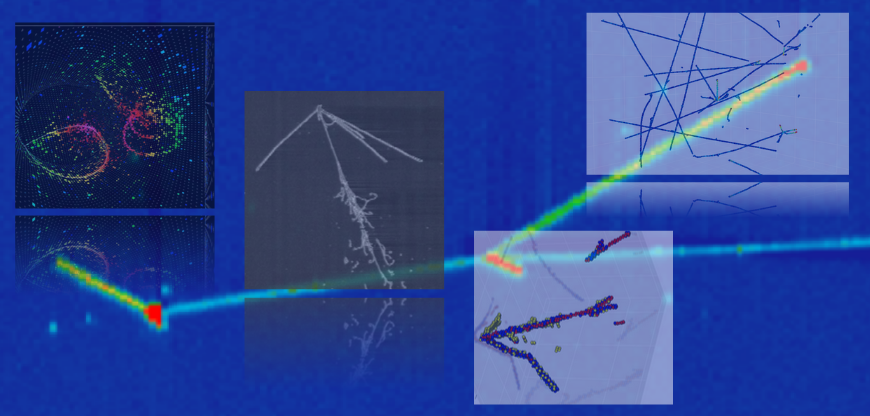The Deep Underground Neutrino Experiment (DUNE) is the flagship next-generation neutrino experiment in the United States, designed to decisively measure neutrino CP violation and determine the neutrino mass hierarchy. DUNE employs Liquid Argon Time Projection Chamber (LArTPC) technology, which provides exceptional spatial resolution and enables detailed reconstruction of final-state particles...
The Deep Underground Neutrino Experiment (DUNE) will deploy massive liquid argon time projection chamber (LArTPC) detectors to measure the properties of neutrinos with unprecedented precision. Currently, two full-scale prototypes of the DUNE far detectors (FDs) are at CERN, which are called the ProtoDUNE detectors. Recent studies indicate that these prototypes could have the potential to...
"Particle imaging detectors have been central to particle physics for more than a century, providing an unrivaled level of detail that has enabled numerous discoveries. Liquid argon time projection chambers (LArTPCs), a dense and scalable realization of this detection paradigm, constitute the core technology of the Deep Underground Neutrino Experiment (DUNE). Automating the reconstruction of...
In the global scientific effort to better understand how neutrinos fit (or don’t) within the bounds of the Standard Model, the Deep Underground Neutrino Experiment (DUNE) aims to make precise neutrino oscillation measurements to determine the neutrino mass ordering and establish the value of neutrino Charge-Parity (CP) violation. To accomplish this, DUNE has a host of near detectors that will...
DUNE is a next-generation long-baseline neutrino experiment aiming to determine
the neutrino mass ordering, study CP violation in the leptonic sector, observe
supernova neutrinos, and search for physics beyond the Standard Model. It will
feature a Near Detector 547 m from the source and a Far Detector ~1300 km away.
Within the Near Detector, the System for on Axis Neutrino Detection...

